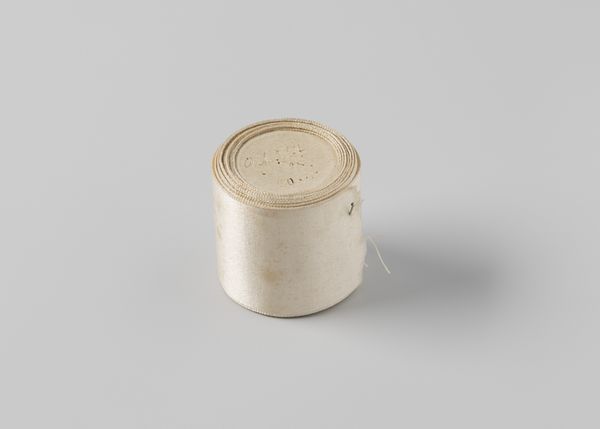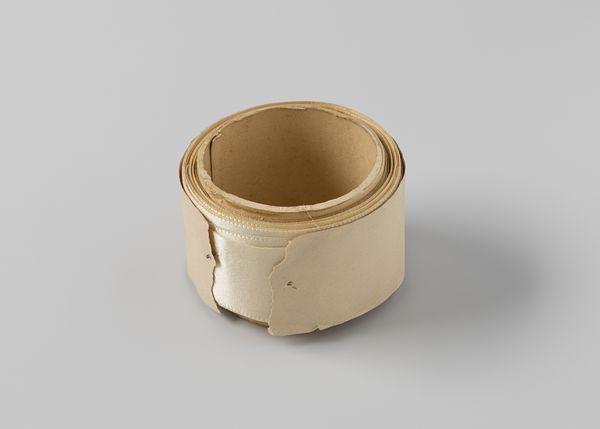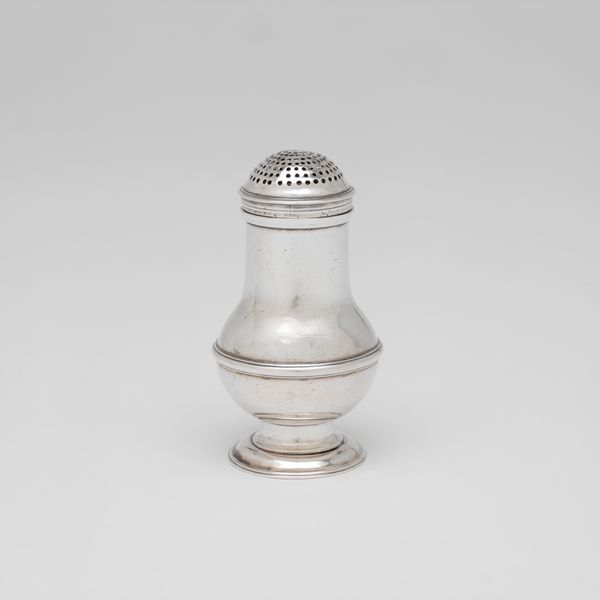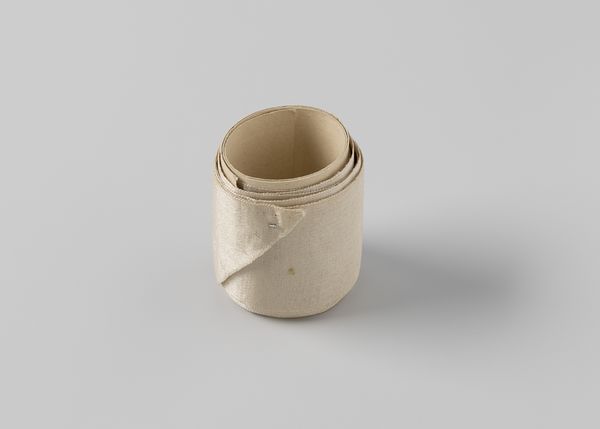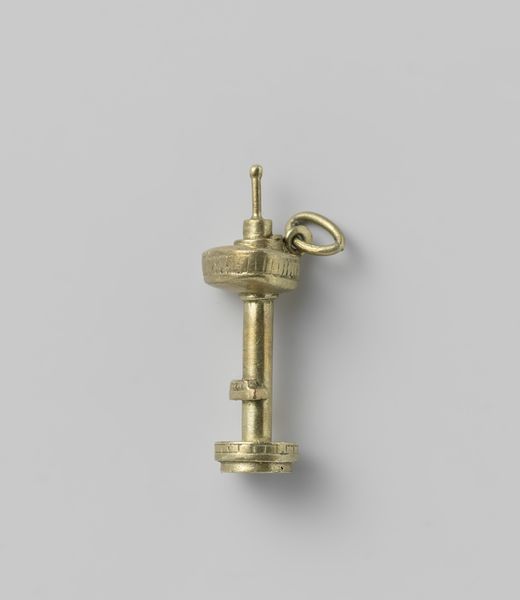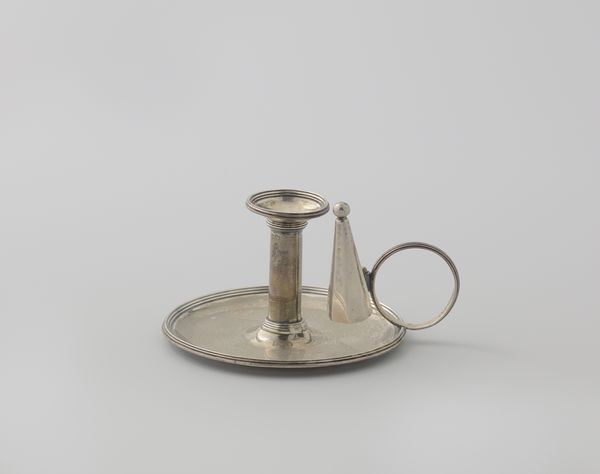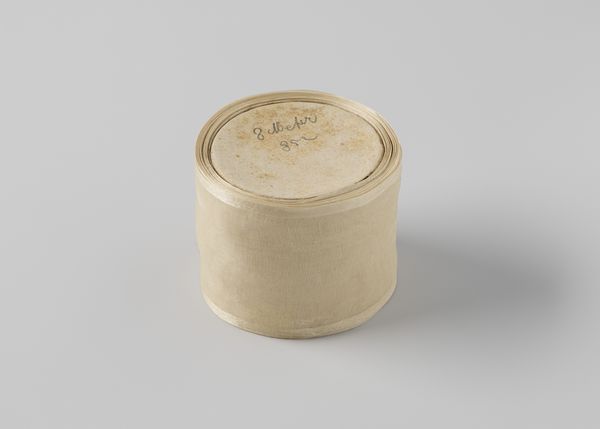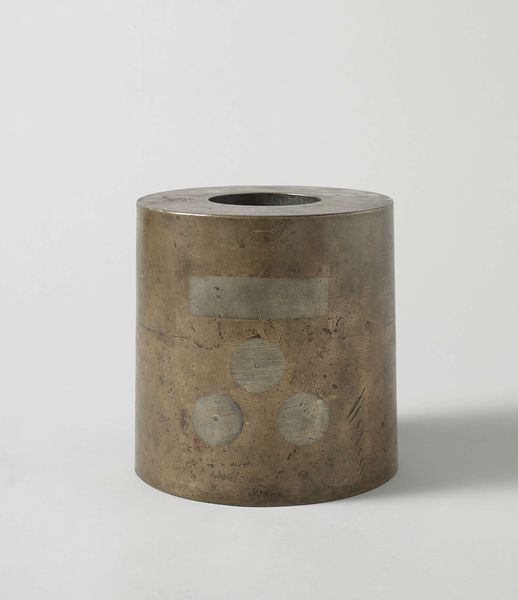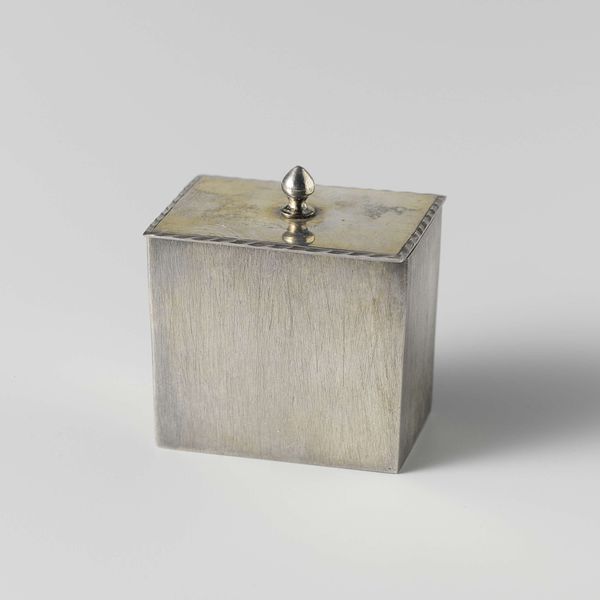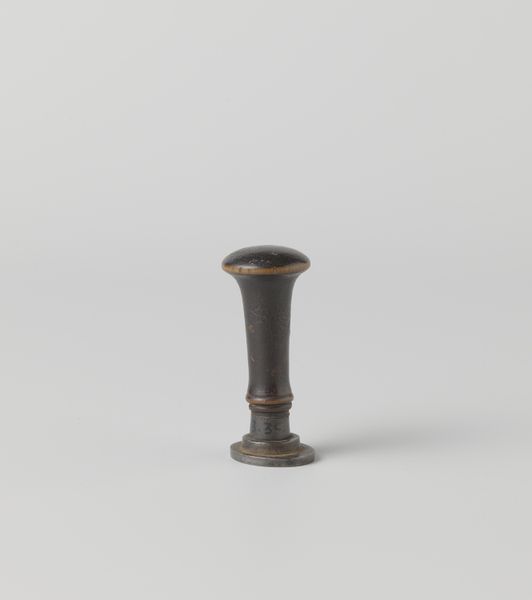
metal, sculpture
#
metal
#
classical-realism
#
sculpture
Dimensions: height 9 cm, diameter 6 cm
Copyright: Rijks Museum: Open Domain
Editor: Here we have the "Standard Kilogram" from 1798. Crafted anonymously, it seems deceptively simple, just a cylinder of metal. It's interesting how a basic object can have so much historical weight. What’s your take on this piece? Curator: The intrigue lies in the object's very ordinariness. Consider the metal, likely an alloy meticulously chosen and prepared. Its creation demanded specific labor practices and industrial capacity available in the late 18th century, linking it directly to the rise of standardized production and burgeoning scientific materialism. What impact do you think this "simplicity" had on 18th century scientific minds? Editor: Well, I imagine having a physical standard like this made accurate science more accessible, more democratic, even. But did its production itself reinforce existing social hierarchies? Curator: Precisely. While it may have facilitated scientific advancement, it also relied on the specialized labor of metalworkers, the extraction of resources from specific geographical locations, and a global network of trade and influence. The 'simplicity' masks a complex web of production relations. Who owned the mines where the materials came from? How were the workers compensated? These are important questions. Editor: That's fascinating. I hadn't considered the implications beyond just the scientific standard it represents. Curator: So, we’re not just looking at a measure of weight; we're analyzing a crystallization of power and a product of its time. It's a potent reminder that even the most seemingly neutral objects are embedded within complex socio-economic systems. Editor: It completely reframes how I see it now. Thanks! Curator: Indeed. By analyzing the production and use of objects, we gain deeper insight into societal structures and values.
Comments
No comments
Be the first to comment and join the conversation on the ultimate creative platform.

